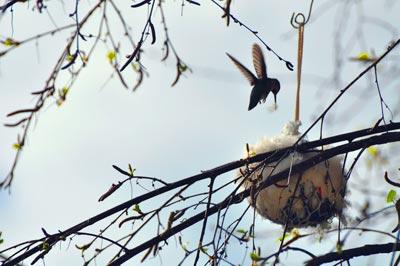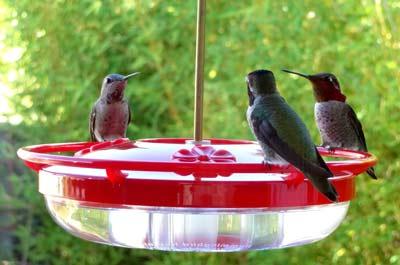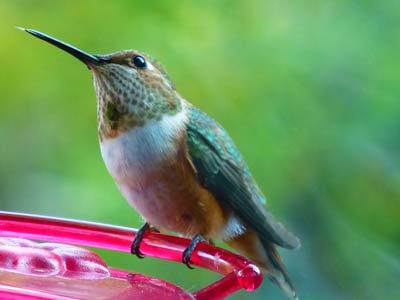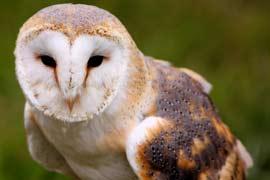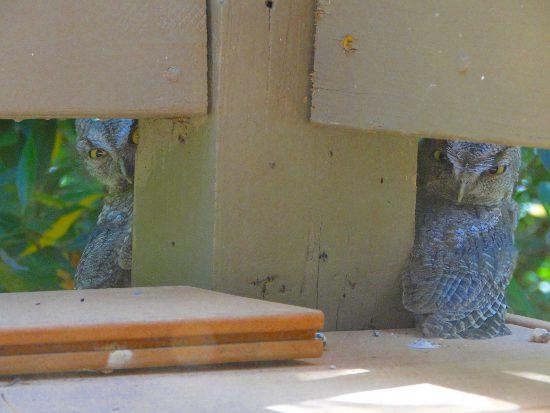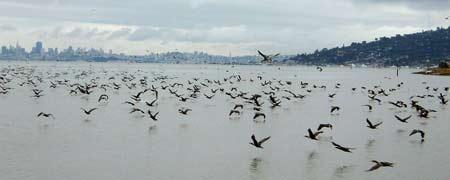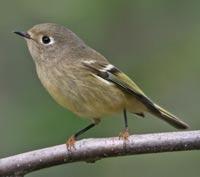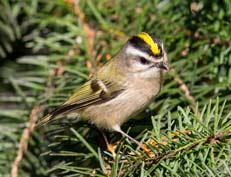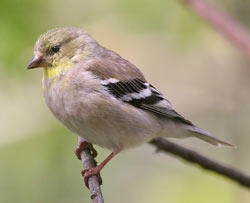January Nature News
Ah, springtime.
The snows are fled away, leaves on the shaws
And grasses in the mead renew their birth,
The river to the river-bed withdraws,
And altered is the fashion of the earth.
(Horace, Odes IV.7, translated by A.E. Housman)
Admittedly, we have a somewhat different climate. But the grasses are inarguably livening up and the fashion of the earth has indeed begun its yearly change. While January is still decidedly wintry in most avian respects (your average bird is neither migrating nor nesting), it is also distinctly springy in other qualities. Cold as it may sometimes feel to us humans when we intermittently emerge from our various heated boxes of house, car, birdfood store and so forth, within the big scheme of life on earth we still get enough winter sunlight and warmth to enable a good amount of photosynthesis and plant growth – provided there is enough water. In that respect, so far so good! The hills are greening, manzanitas and the first annual wildflowers are blooming, and the more seasonally precocious bird species sense that spring is in the air.
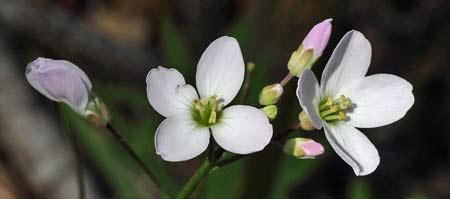
Milkmaids, our earliest wildflower, by NatureShutterbug
One of the more visible early signs of “spring” in bird behavior is the courtship flight of Anna’s hummingbirds, our one year-round hummingbird species. Watch for the males climbing high in the sky, pausing, then swooping down in a dramatic descent punctuated by a distinctive pop! at the low point in the dive, produced by a quick flaring of their tail features. Birds molt into fancy breeding plumage, sing, or perform displays like this to demonstrate their fitness to potential mates. These hummingbird dives are therefore preludes to nesting activity, which hummingbirds can start quite early in the year (or even in December – though they will frequently have multiple broods and you may see nesting hummingbirds over the next several months).
|
Hummingbird at WBU nesting material; |
Females will soon build tidy little nests with downy stuff, lichens, and spider webs, incubate a pair of bean-sized eggs for two weeks or so, then raise the kids while they grow in the nest for another three weeks or so, after which they are full-sized and on the loose. While hummingbirds do not use bird houses, they can be drawn to balls of cottony nesting material, which you can hang up for their use and that of numerous songbirds. Father hummingbirds are models of paternal uselessness, contributing nothing to the raising of the young once the mothers have been adequately impressed by the steepness of their dives and the loudness of their pops! Also on the hummingbird front, our first migratory Allen’s hummingbirds generally appear from the south this month. These smaller, rusty-flanked hummers winter down in Mexico and then travel north along the California coast. They are significantly less abundant than Anna’s hummingbirds, but it is not at all uncommon to see a few over the course of the season if you watch your feeders closely.
|
Anna's Hummingbirds: the common year-round one |
Allen's Hummingbird: rusty-sided migrant |
Many owls also begin nesting this month, so put up owl boxes as soon as possible to maximize your chance of attracting nesting barn owls (the bigger, white, open country, rodent specialist) or western screech-owls (a petite woodland owl that does not screech). The nesting season for nest box-using songbirds such as titmice, chickadees, wrens, and bluebirds is not far off either – these birds will often investigate or spend the night in bird houses in winter, and may begin nest construction as early as February. So now is a good time to put up any bird houses, the cheap, low-maintenance way to boost your local bird populations, including that of a number of insect-eating species that don’t visit seed feeders.
|
Barn Owl: white rodent-eater |
Screech-owl: little guy, doesn't screech |
That’s what’s new in January. Meanwhile, in continuity with December, we continue to host our greatest bird variety of the year, with a multitude of winter-only shorebird, waterfowl, and raptor species. If you’re seeing more hawks around your yard, take a look at our new Neighborhood Hawks page to figure out what they are. Now is the time to visit a local pond or wetland (Las Gallinas in San Rafael, Shollenberger/Ellis Creek in Petaluma, Hamilton or the Bahia Lagoon in Novato) for a reliable abundance of big, visible birds. This winter peak of waterbirds is why January hosts the Waterbird Festival at Richardson Bay Audubon Center in Tiburon, a day of mostly-free bird walks and other activities. You can read our friend David Lukas’ profile of Richardson Bay birding over in our Local Birding Sites section.
Cormorants at Richardson Bay - Photo by Bob Hinz on the Richardson Bay Audubon Center website
In backyards, the winter crew remains the same: white-crowned and golden-crowned sparrows eating seeds, robins and cedar waxwings roaming around looking for berries, and ruby-crowned kinglets, Townsend’s warblers, and yellow-rumped warblers scouring the trees for insects (and suet or mealworm feeders). Here’s a quick lesson on kinglets:
|
Ruby-crowned Kinglet
Photo by Jean-Guy Dallaire
|
Golden-crowned Kinglet
Photo by Mick Thompson
|
|
American Goldfinch in winter plumage |
Finally, the latest updates on goldfinch activity at feeders. After a long slow spell for much of last year, continuing through the summer months and into early fall, we are now seeing and hearing of booming activity at both Nyjer and sunflower chip feeders. Our resident goldfinches have also been joined by some pine siskins, a streaky little finch that comes down from the north in irregular numbers in winter. If you're still not seeing much action on your finch feeders, you may need to refill them with fresh seed - now is the season!


